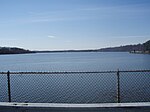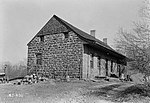The Old Tappan Public Schools is a comprehensive community public school district serving students in kindergarten through eighth grade from Old Tappan in Bergen County, New Jersey, United States.
As of the 2018–19 school year, the district, comprising two schools, had an enrollment of 655 students and 61.2 classroom teachers (on an FTE basis), for a student–teacher ratio of 10.7:1.The district is classified by the New Jersey Department of Education as being in District Factor Group "I", the second-highest of eight groupings. District Factor Groups organize districts statewide to allow comparison by common socioeconomic characteristics of the local districts. From lowest socioeconomic status to highest, the categories are A, B, CD, DE, FG, GH, I and J.Students in public school for ninth through twelfth grades attend Northern Valley Regional High School at Old Tappan, together with students from Harrington Park, Northvale and Norwood, along with students from Rockleigh who attend the high school as part of a sending/receiving relationship. As of the 2018–19 school year, the high school had an enrollment of 1,170 students and 97.9 classroom teachers (on an FTE basis), for a student–teacher ratio of 12.0:1. The school is one of the two schools of the Northern Valley Regional High School District, which also serves students from the neighboring communities of Closter, Demarest and Haworth at the Northern Valley Regional High School at Demarest. During the 1994-96 school years, Northern Valley Regional High School at Old Tappan was awarded the Blue Ribbon School Award of Excellence by the United States Department of Education.The district participates in special education programs offered by Region III, one of seven such regional programs in Bergen County. Region III coordinates and develops special education programs for the 1,000 students with learning disabilities in the region, which also includes the Alpine, Closter, Demarest, Harrington Park, Haworth, Northvale, Norwood and Old Tappan districts, as well as the Northern Valley Regional High School District.








